High humidity can cause a range of problems like the growth of mold and mildew, risk of structural damage to the internal structures of your home, and can increase health problems like asthma and allergies, which lead to a decrease in general health. Investing in a dehumidifier can be remarkable, but how do you know whether the investment is really worth it? In this blog, we will cover pointers that clue you in on the possibility of needing a dehumidifier, what could be the underlying reasons for sweating walls and excess humidity at home, and what advantages come from solving the problem early on. By the end of this post, you should have enough information to know whether a dehumidifier will help improve your comfort and health in the home environment.
How Does a Dehumidifier Work?
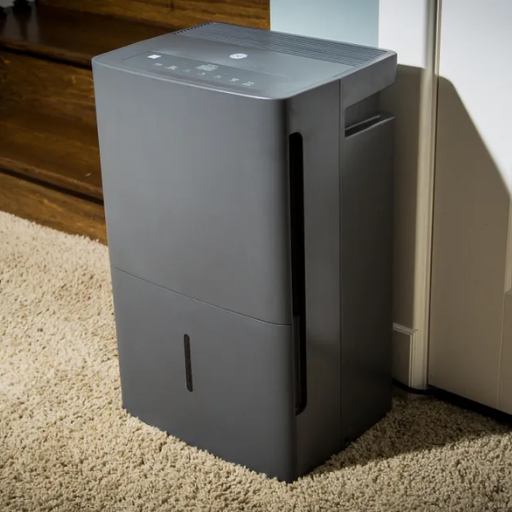
A dehumidifier works by removing excess moisture from the air, helping to maintain an optimal humidity level in your home. The device draws in humid air through a fan and passes it over cold coils, where the moisture condenses into water droplets. This collected water is then stored in a tank or drained away, while the now-dry air is reheated and released back into the room. This process not only reduces humidity but also helps prevent issues like mold growth, musty odors, and discomfort caused by damp conditions.
Understanding the Basics of Dehumidifier Operation
Dehumidifiers are essential devices designed to regulate indoor humidity levels, creating a balanced and comfortable environment. By removing excess moisture from the air, they not only reduce the risk of mold and mildew but also prevent structural damage caused by prolonged dampness. These devices are particularly useful in basements, bathrooms, or any area prone to high humidity levels. Additionally, they can improve air quality and alleviate symptoms for individuals with allergies or respiratory issues by limiting dust mites and microbial growth. Modern dehumidifiers often include features like adjustable humidity settings, energy-efficient modes, and auto-shutoff functions, ensuring both convenience and usability for homeowners.
How Dehumidifiers Help with Excess Moisture
Dehumidifiers, by design, deal with excessive moisture accumulation by pulling in humid air to the device and passing it over refrigerated coils. The air is so cold that the moisture will form water, which is either stored in a reservoir or drained away. By working to maintain the optimal humidity levels of 30% to 50%, a dehumidifier will also remove the possibility of mold, mildew, and dust mites from growing and maintaining allergens. This not only protects one’s health but also stops houses and possessions from being destroyed by moisture damage. The devices are useful in damp areas like bathrooms and basements and also stave off the warping, peeling, or corrosion of walls, furniture, and electronics. New dehumidifiers also have energy-saving modes, stealth, and setting adjustments that make them easier to use.
Comparing Whole House Dehumidifier and Portable Dehumidifier
The main distinction between whole house dehumidifiers and portable dehumidifiers is in capacity and scope as well as entire buildings. Dehumidifiers for the entire house pertain to an entire property and usually takes the form of an add-on to the HVAC. System. They are powerful, efficient, and require very little maintenance post install. However, they are more expensive than portable dehumidifiers. As their name suggests, portable dehumidifiers are smaller and relatively inexpensive, making them practical for individual rooms or areas. They are easy to transport and set up, but their small water tanks necessitate frequent emptying. They also tend to be less powerful and may not work as effectively in larger spaces.
What Are the Signs You Need a Dehumidifier?
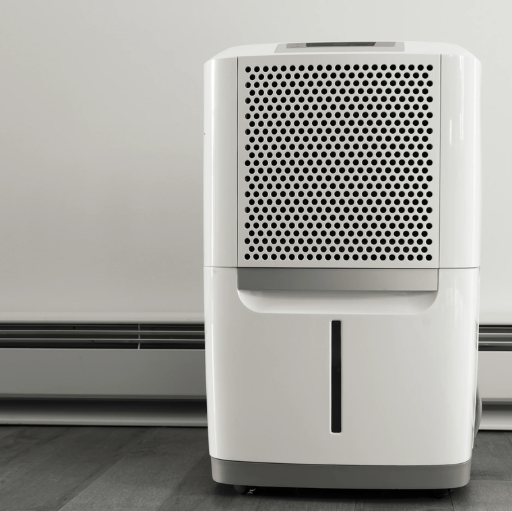
Several tell-tale signs can indicate that a dehumidifier is necessary for your home. Persistent dampness, such as condensation on windows or clammy walls, often points to excessive humidity levels. The presence of mold, mildew, or a musty odor can also signal moisture issues that need addressing. If you notice wood warping, peeling paint, or wallpaper, it could be caused by prolonged exposure to high humidity. Additionally, increased allergy symptoms or respiratory issues in household members can suggest that mold spores and dust mites, both of which thrive in humid environments, are present. A dehumidifier can help mitigate these issues by reducing moisture and maintaining a healthier indoor environment.
Identifying High Humidity Levels in Your Home
There are several tell-tale signs of high humidity levels within the home. A musty smell, condensation on windows, and damp spots on walls will surely indicate excess moisture. Furthermore, the wooden furniture and floors may start to warp alongside doors, causing paint and wallpaper to chip. Another reason to be concerned would be the sticky feeling that is constant while indoors, which also indicates high humidity levels. To measure humidity level more accurately, a hygrometer—an instrument that measures indoor temperature and humidity—can be utilized. Ideally, indoor humidity should remain between 30 and 50 percent to maintain balance and prevent the possibility of health discomforts, and damage to building structure.
Recognizing Condensation Problems
Damp problems can arise with warm and moist air when coming into contact with cooler surfaces like windows, walls, or pipes, resulting in water droplets forming. Signs identified with condensation issues can include windows being fogged up, water pooling around the sills, or molds beginning to form around the affected areas. People with insufficient control of the temperatures in their homes and with limited ventilation tend to suffer more from this. Making a change would require proper ventilation by means of exhaust fans in bathrooms and kitchens to maintaining a proper temperature indoors while also limiting excess moisture like warming clothes inside. A dehumidifier does help manage the risk of condensation forming, but maintaining the structure of the home helps too. Proper management minimizes the chances of health concerns related to mold.
Dealing with Mold Growth and Musty Smells
First, identify and eliminate the source of moisture driving mold growth. Check for leaks in plumbing, roofs, or walls, and repair them promptly. Maintain indoor humidity levels below 60%, using a dehumidifier or air conditioner as needed. Increase ventilation by opening windows or using exhaust fans, especially in areas prone to dampness like bathrooms and basements.
Next, clean visible mold using a mixture of water and detergent or a specialized mold cleaner, and scrub the affected surfaces thoroughly. For porous materials like drywall or carpets that are extensively damaged, replacement may be necessary as mold can penetrate deeply and be difficult to remove completely.
To address musty smells, remove contaminated items and clean the area with a mixture of white vinegar and water to neutralize odors. Activated charcoal or baking soda placed in the affected area can also help absorb lingering smells. Remember to consistently manage moisture to prevent future occurrences, as addressing the root cause is key to long-term success. Always prioritize safety by using gloves, masks, and goggles when handling mold to avoid health risks. For extensive infestations, professional remediation may be required.
How to Determine the Right Humidity Level in Your Home?
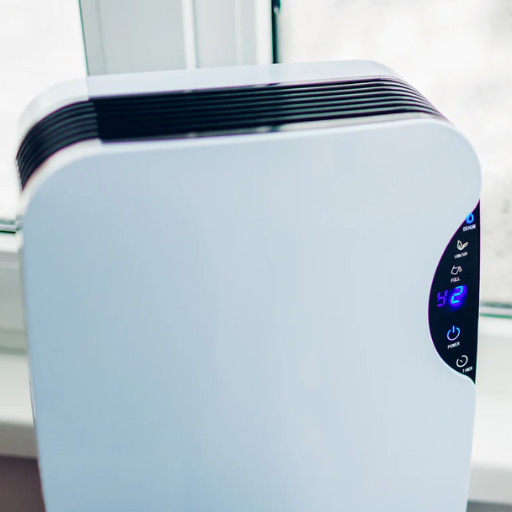
The ideal indoor humidity level typically ranges between 30% and 50%. To determine your home’s humidity, use a hygrometer, a simple and affordable device that measures moisture levels in the air. If you notice signs like condensation on windows, musty odors, or an increase in static electricity, these may indicate your humidity is outside the optimal range. Adjusting your home’s humidity can involve using a humidifier for dry air or a dehumidifier for excessive moisture, ensuring a comfortable and healthy environment.
Understanding Relative Humidity and Comfort
Relative humidity describes the air’s water content in relation to the maximum possible water vapor it can hold at a specific temperature. This is used to gauge comfort level, especially indoors. The relative humidity should ideally be maintained between 30% and 50% for general health and comfort. Below 30% is likely to cause skin dryness, sinus irritation, and higher susceptibility to respiratory infections. Conversely, exceeding 50% can also give rise to mold growth, musty odors, and problems with the control of body temperature.
Appropriate levels of humidity support a balanced air quality, energy use, and level of comfort in a building. For example, high humidity during summer makes the temperature feel hotter than it actually is, as moisture increasingly limits the body’s ability to cool itself through sweating. In winter, low levels of humidity cause drier air which makes the air feel colder. Homeowners are now able to control humidity levels and improve indoor air quality using humidifiers, dehumidifiers, and ventilation systems, which optimally integrate with HVAC systems.
Tools and Methods to Measure Indoor Humidity
Measuring indoor humidity accurately is essential for maintaining a healthy and comfortable environment. Here are some reliable tools and methods:
Hygrometer
A hygrometer is the most common tool for measuring indoor humidity. It is a compact device that provides precise readings of the relative humidity in a space. Digital hygrometers, in particular, offer easy-to-read displays and often include additional features such as temperature measurement and historical data tracking.
Smart Thermostats with Humidity Sensors
Many modern smart thermostats come equipped with built-in humidity sensors. These devices not only monitor and display humidity levels but also integrate with HVAC systems to optimize indoor comfort automatically. They are an excellent choice for those looking to combine humidity monitoring with energy-efficient climate control.
Infrared and Dew Point Sensors
Advanced technologies like infrared or dew point sensors are often used in professional settings. These tools calculate humidity levels by analyzing infrared radiation or using the dew point to measure moisture in the air. While they are more sophisticated, they can be valuable for individuals seeking high-accuracy measurements.
Using these tools allows for efficient control of indoor humidity, ensuring optimal air quality, comfort, and health in your home or workspace.
Impact of Indoor Air Quality on Health
Aspects of air quality concern IAQ directly impact one’s health. Dust, mold and emission of chemicals can lead to respiratory diseases such as asthma and allergy. These airborne pollutants put a strain on the lungs and on the immune system. IAQ is critical for fostering good health and well-being. Breathing polluted air containing volatile organic compounds, PM2.5, fine particulate matter, and carbon monoxide, may Also lead to chronic health problems like decreased cognitive function, cardiovascular diseases and many more. Moreover, poorly controlled humidity levels foster conditions for growth of microbes and contribute towards dry skin, sore throats, and irritation of the eyes or nose.
The use of air purifying systems and consistent monitoring of humidity levels can drastically improve IAQ, which in turn promotes better physical and mental clarity. Enhanced ventilation systems also contribute to easier removal of harmful pollutants from the air. For this reason, observing proper guidelines set for maintaining air quality in the indoor setting is crucial. With the right measures put in place, an individual can work towards optimal health while creating cleaner, safer and healthier living conditions.
Do You Need a Whole-House or Portable Dehumidifier?
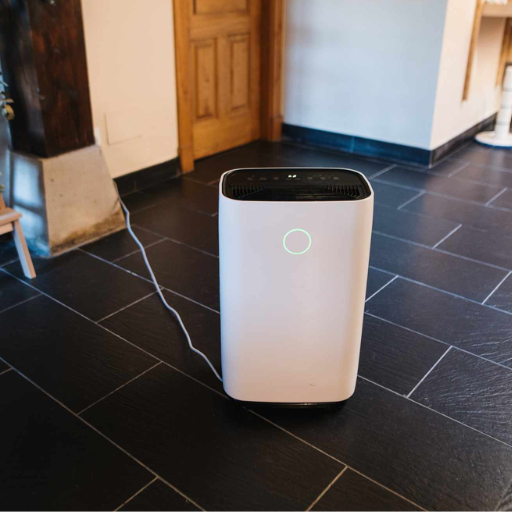
When choosing between a portable and a whole house dehumidifier, look into your personal requirements and the space intended for dehumidification. Less portable, whole-house dehumidifiers integrate with an HVAC system. This is ideal for large areas or homes where controlling humidity is a consistent problem, as it provides whole-home responsiveness. On the other hand, portable dehumidifiers are more economical and versatile for smaller spaces such as a basement or bedroom. Consider the extent of dehumidification needed, available financial resources, and the degree of humidity to determine which proposal fits your situation best.
Benefits of a Whole-House Dehumidifier
Improved Indoor Air Quality
A whole-house dehumidifier helps reduce excess moisture that can lead to mold, mildew, and dust mites. By maintaining optimal humidity levels, it promotes healthier air, which can benefit individuals with allergies or respiratory issues.
Consistent Humidity Control
Unlike portable dehumidifiers, whole-house units provide uniform moisture control throughout your entire home. This ensures that every room maintains a comfortable and balanced humidity level, preventing dampness or dry patches.
Energy Efficiency
Whole-house dehumidifiers optimize your HVAC system’s performance, as air with lower humidity feels cooler. This reduces the need for excessive air conditioning, leading to lower energy bills and a more eco-friendly home.
Convenience and Automation
These systems are often automated and integrated with your HVAC. They require minimal maintenance and allow for seamless operation, with no need to manually empty water tanks or reposition devices.
Protection for Home and Belongings
Proper humidity control helps protect wooden furniture, floors, and walls from warping or damage due to excess moisture. It also prevents unpleasant odors caused by dampness in enclosed spaces.
Advantages of a Portable Dehumidifier
Affordability and Accessibility
Portable dehumidifiers are generally more cost-effective upfront compared to whole-house systems, making them an accessible option for many homeowners. Their smaller scale and lower energy consumption make them especially practical for targeted use.
Flexibility and Mobility
These units are compact and designed to be easily moved from one room to another. This flexibility makes them ideal for addressing specific problem areas, such as basements, bedrooms, or bathrooms, without requiring a fixed installation.
Ease of Use
Most portable dehumidifiers are user-friendly, with simple controls to adjust settings. Many include features like adjustable humidity levels, timers, and easy-to-remove water collection tanks for quick emptying, offering convenient operation for any household.
Choosing Based on Basement and HVAC Requirements
When choosing a dehumidifier for basement and HVAC requirements, I prioritize a few key factors. For basements, I look for units with a high moisture removal capacity to handle damp or humid conditions effectively. Since many basements are prone to mold and mildew, I choose models with built-in air filters for improved air quality. For HVAC needs, I focus on compatibility with my existing system, ensuring the dehumidifier can integrate seamlessly without overloading the system. Energy efficiency is also crucial, so I opt for units with certifications like Energy Star to keep operational costs low. Finally, considering the space size and humidity levels helps me pick a device that balances performance and efficiency.
Can a Dehumidifier Improve Your Indoor Air Quality?
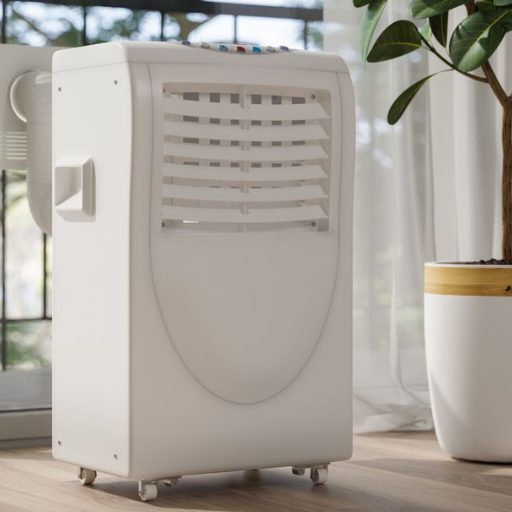
Absolutely, a dehumidifier can help improve your indoor air quality. Excess moisture in the air may result in mold, mildew, and dust mites, all of which are allergens. Reduced humidity leads to improved living conditions by getting rid of odors as well. Moreover, several dehumidifiers have air filters that capture particulates, thus improving the air quality.
Reducing Dust Mites and Allergens
The presence of dust mites is an important factor to consider in indoor air quality since they flourish in humid conditions. A dehumidifier takes care of this problem by controlling the indoor humidity levels between 30-50%, which is too dry for these cover allergens to survive. In addition to drastically reducing the mite population, lower humidity also diminishes the growth of other allergens such as mold and mildew. Furthermore, modern dehumidifiers with HEPA filters capture many airborne allergens including pet dander and pollen, helping clean the air in the house. With moisture control, dehumidifiers are important devices for relieving allergy symptoms and improving air quality in the house.
Preventing Mold and Mildew Growth
From my experience, using a dehumidifier has been a crucial step in preventing mold and mildew in my home. Mold thrives in damp environments, and by maintaining optimal humidity levels, a dehumidifier eliminates the excess moisture that mold needs to grow. I’ve noticed that areas prone to dampness, like basements and bathrooms, stay much drier with a dehumidifier in place. Additionally, consistent use of the device prevents that musty smell associated with mildew, making the living space not only healthier but also more pleasant. For me, it’s been a simple yet efficient way to safeguard against mold damage and maintain a clean, fresh atmosphere indoors.
Enhancing Air Conditioning Efficiency
Using a dehumidifier alongside your air conditioning unit can significantly improve its efficiency. High humidity levels force air conditioners to work harder as they cool and dehumidify the air simultaneously. By removing excess moisture, a dehumidifier reduces this strain, allowing the air conditioner to focus solely on cooling. This not only enhances the overall performance of your AC but also helps lower energy consumption and reduces wear and tear on the system. Many homeowners find that maintaining balanced humidity levels with a dehumidifier extends the lifespan of their air conditioning unit while keeping their home comfortable and energy bills manageable.
References
Frequently Asked Questions (FAQ)
Q: How can I tell if I need to use a dehumidifier in my home?
A: If you notice signs like condensation on windows, a damp basement, or a musty odor, your home is likely too humid, and using a dehumidifier can help remove moisture from the air.
Q: What are the risks of having too much moisture in the air inside your home?
A: Excessive humidity can lead to mold growth, structural damage to your home, and health issues such as allergies or asthma.
Q: Should I buy a dehumidifier for the entire house or just specific areas?
A: It depends on the humidity levels in different areas of your home. If the whole house is affected, you may need a whole-home dehumidifier, but if it’s just certain areas like a basement, a portable unit might suffice.
Q: How does a dehumidifier help with asthma and allergies?
A: A dehumidifier can make the air in your home less humid, reducing dust mites and mold, which are common asthma and allergy triggers.
Q: Is it necessary to use a dehumidifier in the winter months?
A: While humidity is typically lower in the winter months, certain areas like basements and crawl spaces might still benefit from dehumidification to prevent moisture buildup.
Q: Can proper ventilation reduce the need for a dehumidifier?
A: Yes, improving ventilation can help control humidity in your home, but if the air is still humid, a dehumidifier might be necessary.
Q: How often do I need to empty the water from a dehumidifier?
A: This depends on the model and the humidity level. Some units have continuous drainage options, while others need to be emptied daily or every few days.
Q: What is the ideal relative humidity level for a comfortable home?
A: The ideal relative humidity level is between 30% and 50%. If the humidity in your home consistently exceeds this range, a dehumidifier can help maintain comfort.
Q: Can a whole-home dehumidifier be integrated with my HVAC system?
A: Yes, whole-home dehumidifiers can often be integrated with your existing HVAC system to efficiently manage humidity levels throughout your home.
Q: What happens if I don’t use a dehumidifier when my home is too humid?
A: Not using a dehumidifier in a humid home can lead to mold growth, damage to your home, and potential health issues due to excess moisture.



